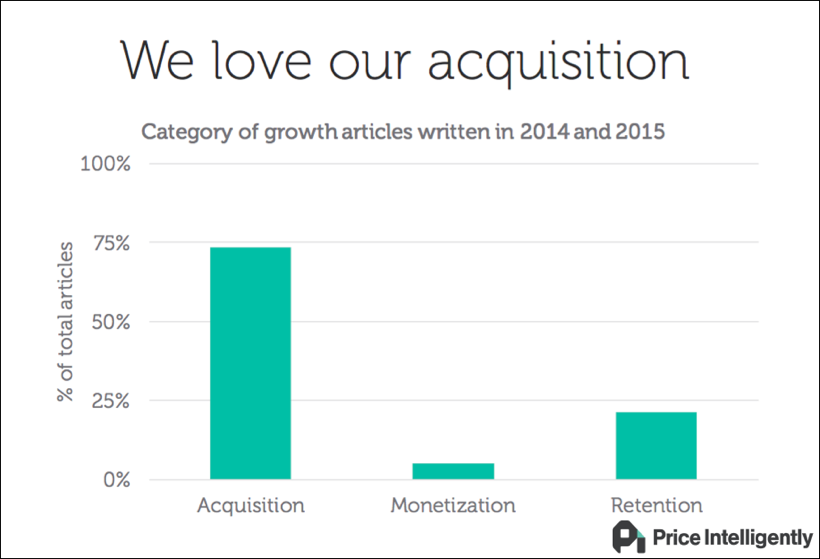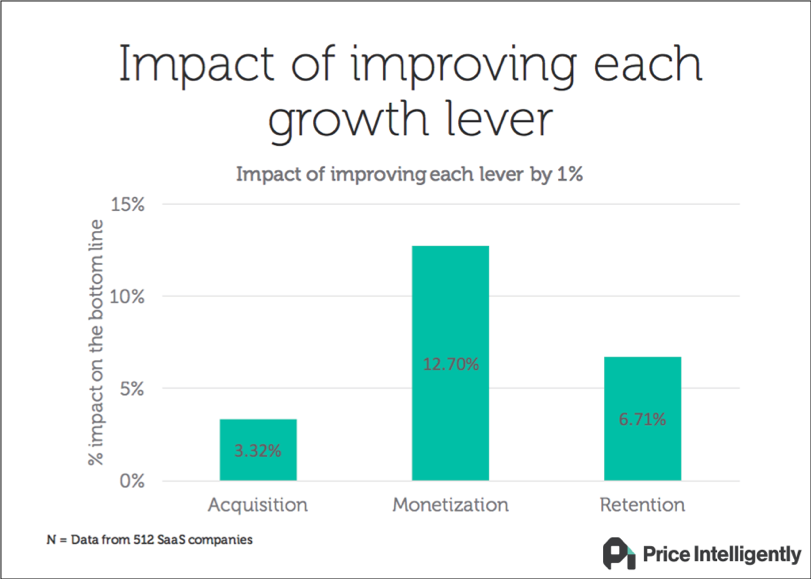11 Characteristics of High Growth Companies
How do you grow, and grow fast? Joanna Lord, CMO of ClassPass, offers her advice for how startups can create sustainable growth.
Growing a company is no easy task. Just ask the CMO of ClassPass, Joanna Lord, who has worked with seven (yes, I said seven!) startup companies to help them increase and maintain growth at a healthy rate.
Lord currently heads the ClassPass marketing team, and is a key contributor to the company’s recent hockey-stick growth. In the past three years alone, ClassPass has grown to over 200 employees , expanded their services to 39 cities across the globe, and garnered $154 million in funding .
So what’s her secret to success?
It isn’t magic. As Lord highlighted in her presentation during our C3 conference , marketers need to shatter the illusion that companies grow fast by simply being in the right place at the right time. When you break down the success of high growth businesses, you won’t find some unreplicable model. What you’ll find is a pattern. A pattern of characteristics, goals, and most importantly, habits.
Habit #1: High growth companies have a breakthrough value proposition.
Of course, a great product is vital to a high-growth strategy. Without a great product, you don’t grow.
But you have to go further. Can you build something around your product that is so incredible it turns customers into champions?

Brainstorm your strengths: why do you and your colleagues wake up in the morning to go to work? What do you love about your company? Put that at the heart of your product and your high-growth strategy, and build around it.
Habit #2: High growth companies hire the right talent.
The first step to building an organizational structure around growth is having the talent to support it.
Executives should foster a low-ego, no-bureaucracy culture — that’s how you build teams that move fast, make adjustments, and innovate at the speed necessary for real growth. When it comes to company structure, flatter structures breed efficiency.
The key to achieving this low-ego culture at your company is to continuously solicit and implement feedback from stakeholders in and outside of the company:
- Seek customer feedback when you’re renaming product features.
- Host company-wide opportunities for your employees to offer input, advice, and share their visions for the future of the company.
- Ask your board of directors what they think about your direction.
Habit #3: High growth companies cultivate a community of obsessed customers.
ClassPass set up a massive community of customers who understand their vision: be your best self.
How did they engineer that passionate customer base?
Create a rally point around your product and bake it into everything you do.
Don’t just sell your customers a product – sell them your values. Get those values deep into the hearts and minds of each one of your employees, and get your core values in every interaction and campaign your team creates.
If you want to be customer obsessed, a big part of that is to create high quality content that solves your customer's needs. Brands using Conductor were able to become more efficient and increased the content they produced by 25% using the same workforce.
If you develop a community that believes in the values of your company, you’re primed for growth at scale. Your audience will start to sell on your behalf. This means customers will help you do your jobs, marketers!
Habit #4: High growth companies understand that customer acquisition isn't always the answer.
Customer acquisition is not the most effective way of growth — monetization is. Lord points to a study done by Price Intelligently that shows that the majority of content written about growth focuses on acquiring customers.

But if you break down each marketing effort and improve each lever, acquisition, monetization and retention, by 1%, monetization has the biggest impact on your bottom line.

Lord offers up her own perspective: ClassPass has reexamined their pricing model twice in the last year. When they recognized that their pricing model wasn’t sustainable long-term, they made adjustments.
And while pricing changes can be difficult to implement — and old customers difficult to assuage when prices rise — it’s important to recognize when your pricing model won’t work for you and evolve appropriately.
The fastest growing companies get data on their pricing on a daily basis, and are constantly examining how their pricing fits into their competitive market. While no customer wants to pay more, high-growth companies know that a well-founded pricing model will bring in the capital needed to improve the product and provide long-term value to the customer.
Habit #5: High-growth companies don't just talk. They do.
Constantly engage in the community you’ve created. Dissect the value your company offers and amplify it. Make demonstrative, public actions that reinforce your commitment to your values.
You get a lot more respect when you do something that shows action, rather than telling the world you believe in something.

For example: when Airbnb announced a company initiative to make people to “feel safe,” the company gave away free carbon monoxide detectors.
Good marketers have the opportunity to serve customers before they need us.
This customer-first marketing strategy helps build a brand their customers want to engage with, promote and champion.
We can create a moment of reciprocal loyalty with these prospects that last for years, so that when they are ready to buy of course they’ll buy with us.
Habit #6: High growth companies invest in unscalable moments of delight.
High-growth companies don’t shy away from unscalable marketing strategies that create personal moments with individual customers.
Lord singles out Simple, a mobile banking service based out of Portland. Simple sends their customers wood engraved cardholders, hand-written birthday cards, and personal messages in emails. Simple differentiates from their competitors in moments like those, creating a community by making every touchpoint personal.

And yes, these strategies are unscalable. But, they can be an incredible opportunity to serve and give value to your customers.
Growth comes when companies simply create value and get in front of as many people as possible, as often as possible.
High growth pitfalls: Habits to avoid
As important as cultivating good habits is, it’s also critical to weed out the bad ones. Lord also shared 5 bad habits that can inhibit high growth:
Bad Habit #1: Marketing owns growth.
Who, at your company, owns growth?
As companies start out, growth is commonly owned by marketing. But as companies expand, more teams need to be owners. Product has to ensure that data flows through their systems; engineers must create tools for efficiency.
And if you aren’t organized internally, Lord reminds us, you just won’t grow.
Bad Habit #2: You obsess over tactics that worked for other people.
This may seem counterintuitive. Didn’t Lord just recommend a bunch of companies for us to emulate? But to Lord’s point, “Take from the tactics the essence, not the tactics themselves.”
Find a marketing tactic you love or a company that you admire, and think about the underlying factors that make it work. That’s what you implement in your strategy.
Bad Habit #3: You go looking for one silver bullet.
You shouldn’t build your ecosystem or your company around one strategy, channel, or asset. It may feel safe to focus on something you know works, but high-growth companies are constantly changing up their strategies.
High-growth companies consistently discover new channels that can work for them, and create fresh assets. They don’t put all their eggs in one marketing basket.
Bad Habit #4: You forget that revenue > growth.
Money is a proxy for the good we do in this world. We shouldn’t be afraid of that.
Are you willing to do the hard work with your CFO or finance team, do the math and model out a return on the investments you’re asking for? That’s crucial to any high growth strategy.
While it’s important to try out new strategies and push boundaries to grow, don’t forget that any risks you take should be backed by a reasonable (and data-driven) belief that it can succeed.
Bad Habit #5: You abandon what got you here.
As a brand, you can’t abandon what got you where you are. If you stray too far from your origins, you’ll see backlash from your community that will ultimately hurt you.
There’s a smart way to nod to what you’ve done in the past, and still try new things and take new risks.
The best companies commit to the value they create through and through. Whatever the special thing that your company brings to the world happens to be, there’s likely a community out there for you to support and commit to — and if there isn’t, you can create one.

![Joanna Lord, CMO, [object Object]](https://cdn.sanity.io/images/tkl0o0xu/production/bb4bf5f2728edbd6e9e12861f3af0b11e4d0cbd9-400x400.jpg?fit=min&w=100&h=100&dpr=1&q=95)






